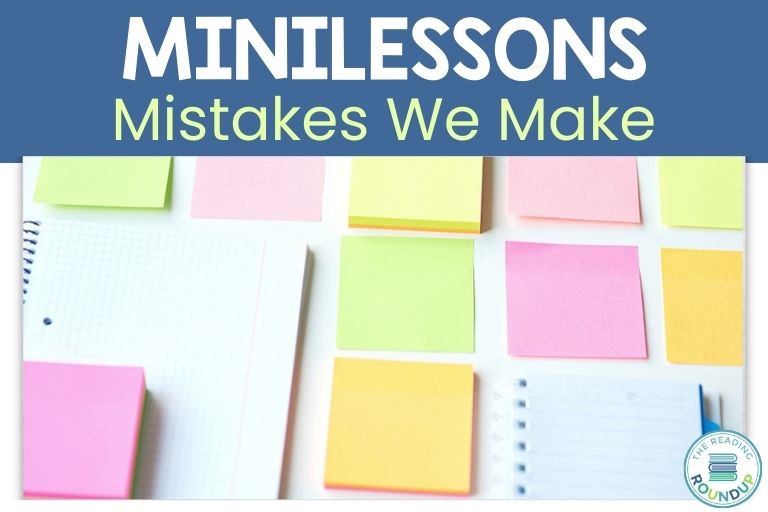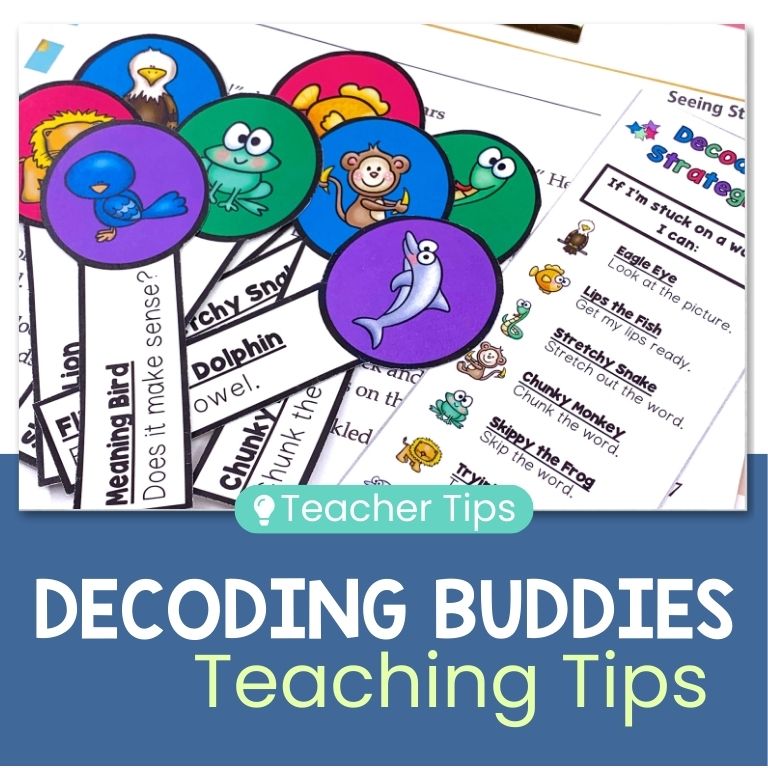
Reading mini-lessons are an essential component of the reading workshop that you’re probably implementing on a daily basis. But many teachers are making very common reading mini-lesson mistakes without even realizing it! Avoid making these mistakes to ensure you’re providing the most effective reading mini-lessons.
In this post, we’ll reveal the biggest mistakes you may be making with your reading mini-lessons. You may also want to check out the following posts in the reading mini-lesson series:

This post includes affiliate links for which I may make a small commission at no extra cost to you should you make a purchase.
Reading Mini-lesson Mistakes
Mistake #1: Mini-Lesson Length
It is called a reading MINI lesson for a reason. They are meant to be short with a clear purpose. The goal is to keep them to 10-15 minutes max. Typically mini-lessons tend to run long for two reasons: adding too many teaching points or trying to read the entire book. (which are 2 other mistakes on our list!)
Mistake #2: Reading the Entire book
You don’t have to read the entire book for your mini-lesson! It is impossible to keep a mini-lesson short if you’re reading the whole book. Lester Laminack recommends using “Best Friend Books” which are familiar texts that you can reuse to teach multiple skills. That way you can use a familiar book to highlight a few pages that teach a specific skill. The students already know the text so they can focus on the strategy rather than trying to comprehend the story.

Mistake #3: Lack of Focus
Sometimes we try to teach too much at once! If you find a good mentor text it will lend itself to many teaching points. Resist the urge to teach them all at once and pick ONE clear focus for each lesson. We can come back to the same book multiple times to teach the other skills. One way to accomplish this is to create a Strategy Spotlight!
The purpose of a reading mini-lesson is to teach a particular strategy and not just how to comprehend that specific book. It is beneficial to start the sentence with “Good Readers can….” or “Good Writers can…” when teaching a mini-lesson during Reading or Writing Workshop. You can find out more about this concept in my post about using the big mistake you may be making with your small group reading instruction.
Mistake #4: Not Student Friendly
Students should be able to explain the strategy themselves. We don’t want to overcomplicate the strategy by using terms/phrases that students can’t understand or use themselves. Be sure to include specific actions/behaviors that the students can use to apply the strategy. It is helpful to use the same language every time you refer to the strategy to help students remember it. You may even want to have older students write the strategy down in their reading notebooks as a reminder.

Mistake #5: Missing Link
Students should have a takeaway that they can use when reading independently. Every mini-lesson should end by telling students exactly what actions you want them to take while reading. This authentic practice with the strategy will help them internalize it and generalize it to any text they read.
Mistake #6: Teaching for Mastery
Students should not be expected to completely master the skill/strategy from one mini-lesson. You may need to teach the same strategy over multiple days before they begin to internalize it. You’ll also be reinforcing the targeted skill during reading groups and conferences. Students will need ample opportunities for authentic practice with the strategies in order to become skilled with them.
Mistake #7: Premade Anchor Charts
As teachers, we like pretty things – I completely get it! I know how tempting it is to print a beautiful anchor that is already created for us. But the reality is, even though we like how it looks, these premade anchor charts do not best serve our students. In order to be more effective, we should be co-creating the anchor charts with students during our reading mini-lessons. By doing so, students have more ownership of the strategies, refer back to the charts, and are more likely to internalize the skills. Ultimately that’s the whole point of an anchor chart!
Time to Reflect
If you’re guilty of making one or more of these mistakes with your reading mini-lessons, you are not alone! We’ve all made at least one of these mistakes – myself included. The important thing is that we continue to learn and improve in order to provide the most effective instruction for our students. Read my tips for more effective reading mini-lessons based on the mistakes I’ve made over the years!
How have you grown and improved with your reading mini-lessons? What tips have you learned from your own mistakes? I’d love for you to share them in the comments!

Want to Pin this for later?









